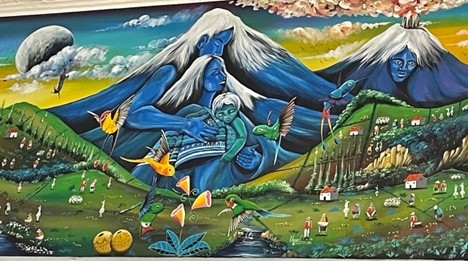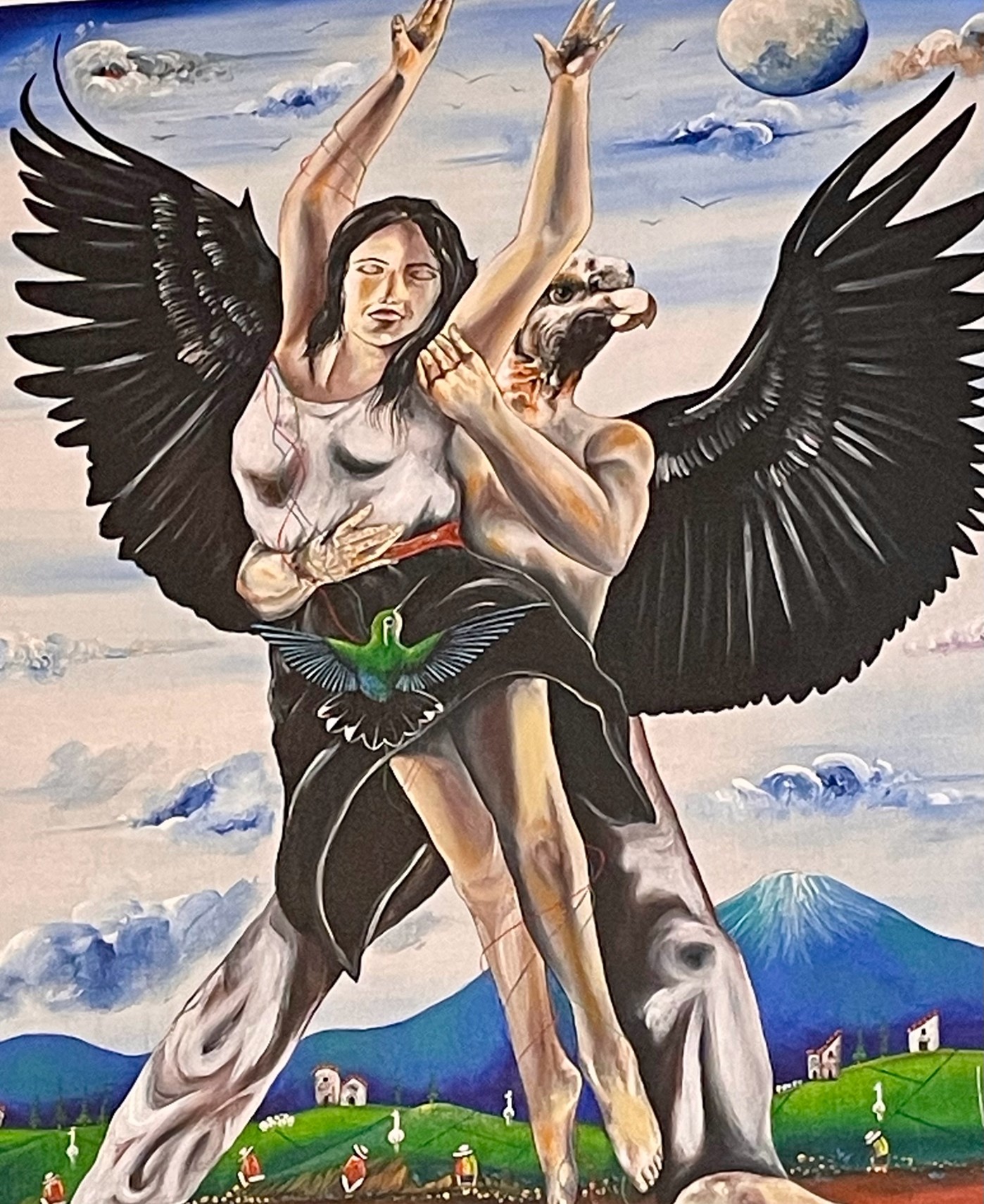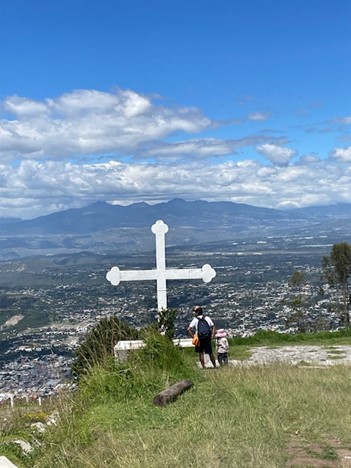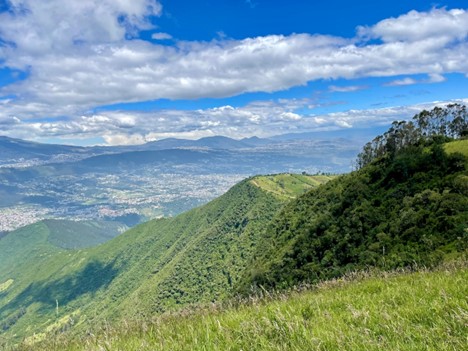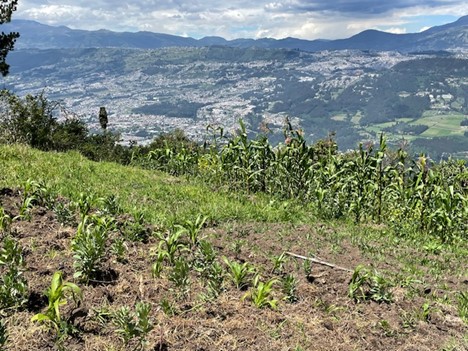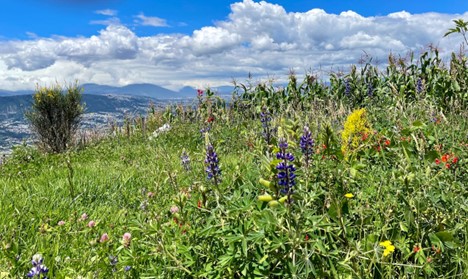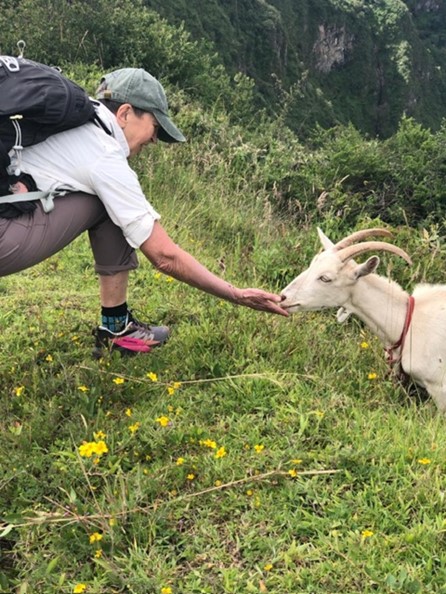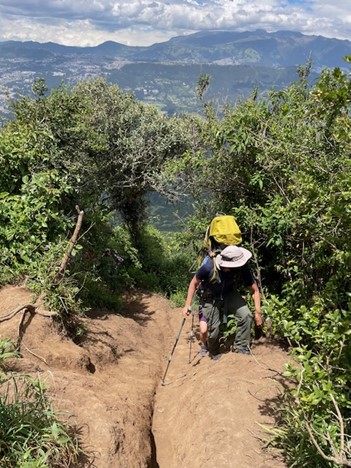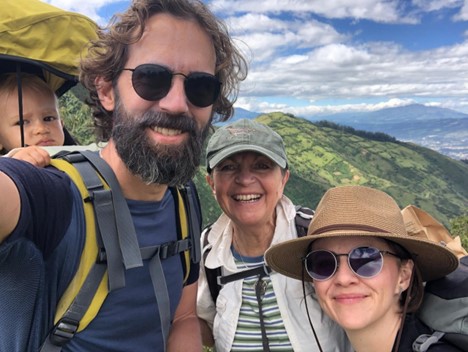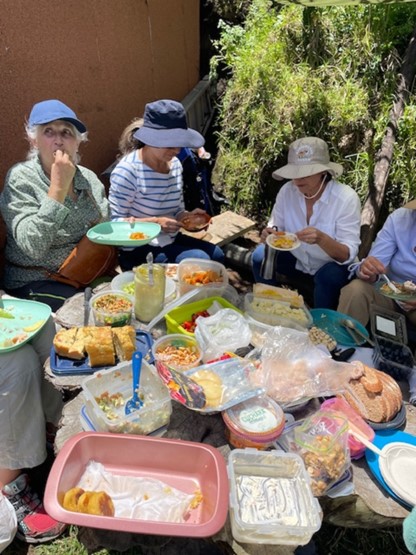.
The indigenous people in Ecuador believe that the Earth (Mama Pacha) is a living being. Mountains and volcanos are living beings too, expressing emotions such as love, fury, pain and desire. Love affairs between the volcanos are told in legends, explaining eruptions, the creation of mountains and lakes. When I visited an art shop selling indigenous arts and crafts, two paintings were catching my attention. Both are telling stories of love and the intimate relationship between the human being and nature. The painter is a native from Tigua close to Quilotoa called Edison Ugsha.
.
.
.
.
.
This painting expresses the best-known love story in Ecuador – the battle between Cotopaxi and the volcano Chimborazo over Mama Tungurahua, a female volcano. Cotopaxi to the right was the loser and Chimborazo married Tungurahua, who gave birth to the mountain Guagua Pichincha (you can see their union above).
.
.
.
.
.
This is a story of a condor falling in love with a human being. He takes on some human features like arms and hands. His feet are like tree trunks. The woman loves the bird deeply and transforms into a condor to celebrate their unity.
There is another love story about a lake on the mountain Quilotoa (4000m). The parents of the volcano Quilotoa (mountains Illiniza) were forbidding her to marry Cotopaxi. Qilotoa became so furious that she erupted. Out of her tears, the turquoise-colored lake was formed, the most beautiful lake in Ecuador. I visited this lake 10 years ago. Beauty formed out of pain – what a story of healing!
Friendship and love is important in the Ecuadorian culture. I was invited to join a group of about 15 local people to hike to the top of the mountain Ilaló (8136 feet). The group were mostly ladies who did more than 50 hikes together. When I first visited Ecuador ten years ago, hiking was not popular at all. This changed in the last few years. We saw many hikers and runners on the mountain. Somebody sold even refreshments and food on the top of the mountain.
.
.
.
.
.
This cross is placed not on the top but near the parking lot where we left our cars.
.
.
.
.
.
On the way up to the top
.
.
.
.
.
Mais is the most popular crop here. Even high up on the mountain, there are sometimes tiny fields of corn.
.
.
.
.
.
Abundance of blooming flowers
.
.
.
.
.
I was feeding this goat with grass, which was all around. It still liked to eat out of my hand.
.
.
.
.
.
Up this steep slope, my son carried Rio Amadeo on his back. It would have been dangerous and not even possible to hike when wet. It is slippery even when dry.
.
.
.
.
My family with darling Rio Amadeo
.
.
.
.
.
A bit farther down we all had lunch beside a tiny hut built by a friend of my son. Everybody brought home made food like ceviche, empanadas, chochos and tostado. Unfortunately, I took the photo pretty much at the end of the feast.
.
.
.

